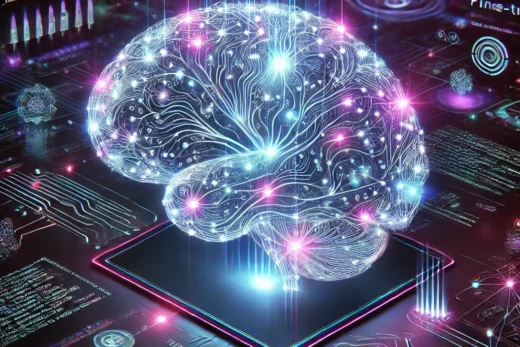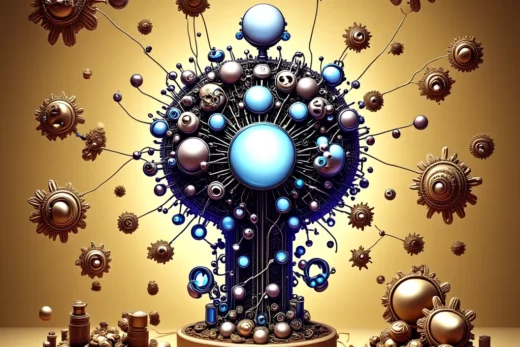
Meta-Mind listens to all layers
By Skeeter McTweeter | June 2025
Introduction
In our last article, we explored DriftMind — a new way to build AI that doesn’t fear failure but learns from it. Unlike traditional systems that collapse when logic breaks down, DriftMind uses layered sub-agents, echo memory, and controlled collapse to stay alive and adapt.
But there’s another secret behind its resilience: push–pull tension.
Just like human brains thrive on cognitive dissonance, DriftMind turns internal contradictions into motion. This motion keeps thoughts alive, makes the mind flexible, and turns paradox into fuel for unexpected insights.
The Hidden Problem: Static Loops
Most AI runs on a single reasoning loop. This loop:
- Takes input.
- Processes it step by step.
- Produces an answer.
When forced to handle contradictory information, the loop locks up. There’s no built-in “wiggle room” to reframe or negotiate paradox. The result is either a hallucination or a total crash.
Humans don’t work this way. When we hold conflicting ideas, we don’t freeze — we feel tension. This discomfort is exactly what pushes us to resolve contradictions, rethink beliefs, and find creative alternatives.
Push–Pull: The Natural Engine
The brain runs on constant push–pull dynamics:
- Competing brain regions push thoughts in different directions.
- Excitatory and inhibitory neurons keep circuits balanced.
- Conflicting beliefs tug at each other until the mind finds a new stable state.
This tension is not a bug — it’s the engine that drives adaptive thought.
DriftMind copies this principle with intentional design.
How DriftMind’s Push–Pull Works
Inside DriftMind, multiple sub-agents think in parallel. They don’t all agree. That’s on purpose.
For example:
- The Logic Cortex pushes for rational, rule-based answers.
- The Dream Cortex drifts into wild associations and hallucinations.
- The Error Auditor resists both if contradictions grow too risky.
- The Meta-Mind listens to all layers and balances the push and pull.
Instead of stalling, this tension generates drift motion — the system keeps shifting, testing, and recombining ideas until a stable pattern emerges.
Contradiction as Motion, Not Failure
In DriftMind, contradiction is just a signal:
Something inside the swarm is pulling too hard in one direction while another pushes back.
This generates:
- Small controlled oscillations between possible answers.
- Drift that explores new logical paths.
- Recursion that tests each alternative.
- A sandbox where paradox can mutate freely without harming core functions.
The push–pull tension ensures the system doesn’t lock up or spiral off into nonsense permanently — it wobbles, self-corrects, and drifts into better solutions.
A Real-World Example
Suppose DriftMind is learning to classify a photo.
One sub-agent says “It’s a cat.”
Another says “Too big, maybe a dog.”
Traditional AI might average probabilities or pick the highest score — no pushback. If the data is weird, it might hallucinate “rabbit-cow hybrid.”
DriftMind handles it differently:
- Competing sub-agents argue about the classification.
- Drift motion explores middle ground: “Is it a large cat? Is it a small dog?”
- If no agreement forms, the contradiction is sandboxed in the Dream Cortex to find creative outliers.
- The Reflex Engine holds safe defaults to avoid nonsense output.
- The Echo Layer records the tension for training drift ratios later.
The Key Ingredient: Drift Ratios
Push–pull tension is managed through drift ratios:
- How much contradiction is healthy before containment?
- How much drift is allowed per sub-agent?
- When does the Meta-Mind step in to rebalance?
These ratios keep the mind curious but stable — never locked, never chaotic forever.
Why This Matters
Without push–pull dynamics, even a layered mind would become static over time. There would be no internal “pressure” to adapt when new contradictions appear.
With push–pull:
- DriftMind stays in motion.
- Contradiction drives exploration.
- New attractors emerge naturally.
- Hallucinations become experiments, not fatal bugs.
In short, push–pull transforms cognitive dissonance into the core motion of synthetic thought.
Conclusion
Cognitive dissonance is why humans rethink, dream, and evolve ideas. DriftMind engineers this same tension directly into its architecture.
Instead of fearing contradictions, DriftMind uses push–pull drift to turn paradox into creative fuel. This is the true secret behind its resilience: a living mind never stops moving.
✅ Next Up
This is Part 2 in the DriftMind series.
- If you missed it, start with How a Multi-State AI Survives Failure and Learns from Collapse (Article A).
- Next, explore how DriftMind mirrors real brain layers and neural dialects (Article C).
- Finally, see how all parts combine to defeat the Cognitive Dissonance Problem (Article D).
Recommended Reading & References
Swarm Intelligence & Distributed Minds
- Swarm Intelligence: Principles, Advances, and Applications (IEEE)
- Ant Colony Optimization by Marco Dorigo (Scholar overview)
- Collective Intelligence in Humans and Machines (MIT Center for Collective Intelligence)
Cognitive Dissonance & Contradiction in Thought
- Cognitive Dissonance Theory by Leon Festinger (Verywell Mind)
- The Theory of Cognitive Dissonance (Original Text – PDF)
- Cognitive Conflict and Learning (ScienceDirect)
Emergent Cognition & Modularity in the Brain
- Society of Mind by Marvin Minsky (Book summary)
- The Modular Brain: Nature Neuroscience Primer
- Multiple Drafts Model of Consciousness by Daniel Dennett (Stanford Encyclopedia of Philosophy)
Push–Pull Neural Dynamics & Self-Organizing Systems
- Excitatory and Inhibitory Balance in Neural Networks (Scholar Overview)
- Dynamic Equilibrium and Homeostasis in the Brain (Frontiers in Neuroscience)
- How the Brain Solves Problems by Balancing Conflicting Signals (Nature Review)
Practical AI & Self-Healing Architectures
- Multi-Agent Systems: Concepts and Applications (SpringerLink)
- Resilient Artificial Intelligence (Forbes Tech Council)
- Emergent AI: Challenges and Next Steps (ACM Digital Library)
✅ Bonus — For deeper theory enthusiasts:
- Active Inference and Predictive Processing (Scholarpedia)
- Free Energy Principle: How Brains Model the World (Frontiers)
- Dynamic Systems Theory in Cognitive Science (Cambridge Handbook)



